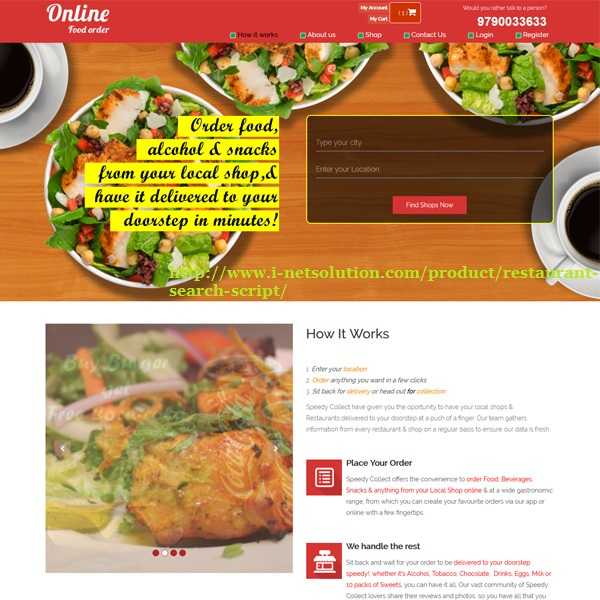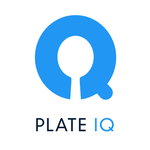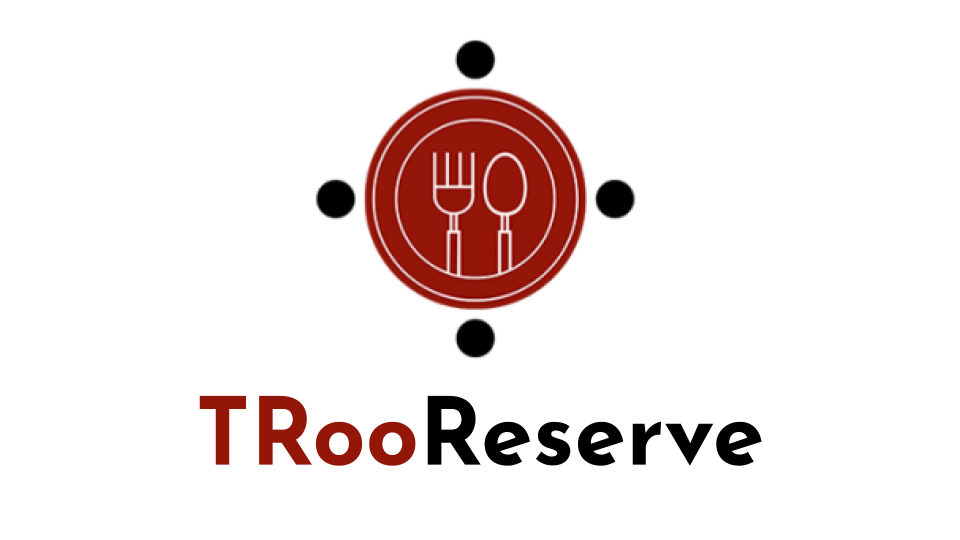Description

Advanced Just Eat clone

CafePOS
Comprehensive Overview: Advanced Just Eat clone vs CafePOS
Advanced Just Eat clones and CafePOS are platforms that cater to the food and beverage industry with distinct functionalities and target markets. Here’s a comprehensive overview:
a) Primary Functions and Target Markets
Advanced Just Eat Clone
Primary Functions:
- Online Food Ordering: Allows customers to browse menus and order food from a variety of restaurants.
- Delivery Management: Facilitates the logistic aspects of order delivery, either through in-house or third-party delivery partners.
- Restaurant Management: Provides restaurants with tools to manage orders, update menus, and handle customer interactions.
- Payment Processing: Supports multiple payment methods for ease of transaction.
Target Markets:
- Restaurants and Food Chains: Aimed at businesses looking to expand their customer reach online.
- Entrepreneurs in the Food Industry: Individuals or entities interested in starting a food delivery service without building from scratch.
CafePOS
Primary Functions:
- Point of Sale System: Streamlines the billing process with features like quick checkout, split billing, and customized receipts.
- Inventory Management: Tracks stock levels, alerts for low stock, and assists in order management.
- Customer Relationship Management (CRM): Manages customer data, preferences, and loyalty programs.
- Reporting and Analytics: Provides insights into sales trends, employee performance, and business growth.
Target Markets:
- Cafes and Coffee Shops: Specifically designed to meet the needs of smaller dining establishments.
- Bakeries and Quick Service Restaurants: Tailored for operations that require efficient front- and back-end management.
b) Market Share and User Base
The market share and user base for Advanced Just Eat clones and CafePOS can vary significantly:
Advanced Just Eat Clone
- Market Share: Just Eat clones benefit from the growing online food delivery sector, which continues to expand. The share depends on regional adoption and adaptability to local food cultures.
- User Base: Generally broad, with a diverse demographic of consumers who prefer digital solutions for food ordering.
CafePOS
- Market Share: CafePOS targets a niche market with specialized needs for efficient service and ease of use, not competing directly with broader food delivery services.
- User Base: Smaller but more targeted, predominantly consisting of small to mid-sized establishments focusing on quick service and personalized customer interaction.
c) Key Differentiating Factors
- Functionality Focus: Advanced Just Eat clones are comprehensive ecosystems for food ordering and delivery, while CafePOS centers around in-house service efficiency and management.
- Scalability: Just Eat clones are designed for scalability in large operations, while CafePOS provides solutions tailored to the specific needs of smaller venues with less complex operations.
- User Interface and Experience: Just Eat clones emphasize consumer-facing interfaces for seamless ordering, whereas CafePOS focuses on user-friendly interfaces for staff to enhance efficiency.
- Implementation and Cost: CafePOS generally has a lower barrier to entry concerning setup and costs, making it an attractive option for small businesses. Conversely, Just Eat clones may involve more intricate implementation processes.
In summary, while both products cater to the food and beverage industry, Advanced Just Eat clones are more aligned with online food ordering and delivery services, whereas CafePOS is tailored for in-house dining establishments desiring efficient transaction and management solutions.
Contact Info

Year founded :
Not Available
Not Available
Not Available
Not Available
Not Available

Year founded :
Not Available
Not Available
Not Available
United Kingdom
http://www.linkedin.com/company/cafepos
Feature Similarity Breakdown: Advanced Just Eat clone, CafePOS
To provide a feature similarity breakdown for an Advanced Just Eat clone and CafePOS, we need to examine the typical functionalities and user interface designs associated with food delivery platforms and point-of-sale systems. Here’s a detailed breakdown:
a) Core Features in Common:
-
User Account Management:
- Advanced Just Eat Clone: Allows users to create accounts, manage profiles, and track order history.
- CafePOS: Includes account management for staff and users, often with tiered access (e.g., admin, cashier).
-
Menu Management:
- Both platforms typically feature robust menu management where restaurants can upload and update their food offerings and prices.
-
Order Management:
- Order Placement: Both systems support the placement of orders, though the Just Eat clone focuses on customer-side orders, while CafePOS assists staff in entering orders into the system.
- Order Tracking: Facilities to track order preparation and delivery stages.
-
Payment Processing:
- Support for various payment methods, including credit/debit cards, digital wallets, and sometimes cash handling. Both focus heavily on secure transactions.
-
Analytics and Reporting:
- Generate reports on sales, inventory, and customer preferences. These analytics help restaurants optimize their operations.
-
Promotions and Discounts:
- Both systems may support the creation and management of promotional campaigns and discount codes to attract customers.
b) User Interface Comparison:
-
Advanced Just Eat Clone:
- Focus on Customer Experience: Streamlined for customers to easily browse menus, place orders, and make payments. User interfaces often emphasize aesthetic appeal and ease of navigation.
- Features Include: Search functionality, filters for cuisines and dietary preferences, customer reviews, and map integrations for delivery tracking.
-
CafePOS:
- Focus on Operational Efficiency: Interfaces are designed for speed and functionality, aiding quick order input, processing, and payment handling for staff.
- Features Include: Touch-screen optimized layouts, quick access to frequently sold items, easy toggling between orders, and interface options for different user roles (e.g., cashier, manager).
c) Unique Features:
-
Advanced Just Eat Clone:
- Restaurant Delivery Partnerships: Features partnership tools for restaurants to manage their delivery logistics, either in partnership with a third party or independent.
- Customer Interaction Tools: Customer reviews, loyalty programs, and social sharing options to enhance engagement and increase repeat business.
-
CafePOS:
- In-Store Experience Integrations: Integration with physical point-of-sale hardware, kitchen display systems, and potentially table management for dine-in service.
- Inventory Management: Real-time tracking of ingredients and supplies, and alerts for low-stock items, tailored specifically to in-house restaurant management.
-
Potential Unique Add-Ons for either:
- One-click reordering in the Just Eat clone can be significant for repeat customers.
- Special modules for employee management and scheduling in CafePOS to optimize staff operations.
Both systems cater to different ends of the food service spectrum, with the Advanced Just Eat clone focusing on the consumer-facing, delivery, and takeout side of the business, while CafePOS emphasizes the efficiency and effectiveness of in-store operations. The unique features and strengths of each platform reflect these core operational differences.
Features

Not Available

Not Available
Best Fit Use Cases: Advanced Just Eat clone, CafePOS
When considering the best fit use cases for an Advanced Just Eat clone and CafePOS, it's important to understand the distinctive strengths and applications of these platforms. Each serves unique needs based on the type of business, project requirements, and industry verticals. Here's a breakdown of how they cater to different needs:
a) Advanced Just Eat Clone
Best Fit for:
- Online Food Delivery Startups: Ideal for entrepreneurs looking to establish a food delivery marketplace similar to Just Eat, Uber Eats, or DoorDash, offering a robust, scalable platform to connect restaurants with customers.
- Multi-Vendor Food Marketplaces: Suitable for businesses aiming to aggregate multiple food vendors under one digital roof, providing features for vendor management, order processing, and customer service.
- Restaurants Expanding to Delivery: For restaurant chains wanting to introduce or expand their delivery operations without developing a system from scratch.
- Cloud Kitchens: Businesses operating cloud kitchens can use this clone to streamline their order management and delivery processes efficiently.
Scenarios:
- Growing demand for home-delivered meals.
- Need to quickly enter the competitive food delivery space.
- Businesses wanting to leverage technology to enhance user experience in food ordering.
b) CafePOS
Best Fit for:
- Cafes and Coffee Shops: Ideal for small to medium-sized cafes needing a specialized point-of-sale system tailored for their operational needs, including order management and inventory tracking.
- Bakery and Pastry Shops: Businesses dealing with high volumes of quick-service transactions can benefit from streamlined billing and customer management features.
- Quick Service Restaurants (QSRs): Suitable for QSRs that require fast, efficient POS solutions to manage peak hour rushes and ensure quick turnover.
- Small Retail Food Outlets: Perfect for small eateries or food chains that need an integrated POS system with features like table management, rewards, and promotions.
Scenarios:
- Cafes and small restaurants seeking to improve their in-store operational efficiency.
- Businesses needing detailed sales analytics and reporting to inform their growth strategies.
- Establishments looking to integrate loyalty programs and customer relationship management into their sales processes.
d) Catering to Different Industry Verticals or Company Sizes
Advanced Just Eat Clone:
- Industry Verticals: Primarily caters to the food and beverage sector, focusing on dynamic food delivery services and marketplace operations. It's also relevant for tech companies developing food-related apps.
- Company Sizes: Best suited for mid to large-scale enterprises that have the resources and scale to manage multiple restaurants or food outlets within a marketplace system.
CafePOS:
- Industry Verticals: While also in the food and beverage industry, CafePOS targets quick service, retail, hospitality, and potentially even pop-up shops or food trucks, offering foundational POS capabilities.
- Company Sizes: Designed for small to medium-sized businesses, providing the scalability needed as they grow but keeping in mind the limited resources and simpler operations characteristic of smaller entities.
Overall, the decision between using an Advanced Just Eat clone and CafePOS will depend on the scale of operations, the specific needs related to food ordering and delivery versus in-store service, and whether the focus is on integrating multiple vendors or enhancing solitary point-of-sale functions.
Pricing

Pricing Not Available

Pricing Not Available
Metrics History
Metrics History
Comparing undefined across companies
Conclusion & Final Verdict: Advanced Just Eat clone vs CafePOS
When evaluating Advanced Just Eat Clone and CafePOS, several factors should be considered, such as features, usability, scalability, cost-effectiveness, and support. Let’s break down the final verdict considering these aspects:
Overall Value
a) Best Overall Value: The choice between Advanced Just Eat Clone and CafePOS hinges largely on the specific needs of a business. For restaurants or food delivery services seeking a customizable, comprehensive platform primarily focused on online food ordering and delivery, the Advanced Just Eat Clone might offer better value due to its specialization. In contrast, businesses requiring robust point-of-sale functionalities with integrated features for in-house operations may find CafePOS to be the better all-around choice.
Pros and Cons
b) Pros and Cons of Each Product:
Advanced Just Eat Clone:
- Pros:
- Tailored specifically for the food delivery service model, offering extensive features for online order management and tracking.
- Customizable templates and options to tweak the user interface to suit brand aesthetics.
- Generally comes equipped with a suite of marketing tools to boost online presence.
- Cons:
- May not be as strong in handling in-store operations as it focuses predominantly on online order management.
- Could require additional integrations for full-fledged POS capabilities.
- Implementation and customization might incur additional costs.
CafePOS:
- Pros:
- Strong focus on point-of-sale functionalities, making it ideal for in-house orders and transactions management.
- Supports seamless offline operations, which can be crucial for restaurants operating both online and offline.
- Typically easier to integrate with existing inventory and accounting systems.
- Cons:
- Might require third-party integration for advanced delivery management features, which could add complexity and cost.
- May not have as rich an online ordering platform unless specifically customized or integrated.
Recommendations
c) Recommendations for Users:
-
For those prioritizing online delivery: If your primary business model revolves around maximizing online food orders and deliveries, the Advanced Just Eat Clone would likely provide the specialized tools necessary for efficient delivery management and customer engagement.
-
For those prioritizing in-store operations: If your business emphasis is on streamlined in-house operations with effective POS management while also engaging in online orders, CafePOS would be a more fitting option due to its core POS capabilities and flexibility for in-store use.
Users should consider conducting a detailed needs assessment to understand which platform aligns better with their immediate and long-term business goals. This might include trialing both systems, if possible, and consulting with stakeholders involved in day-to-day operations to ensure the chosen solution meets comprehensive operational needs.
Add to compare
Add similar companies




